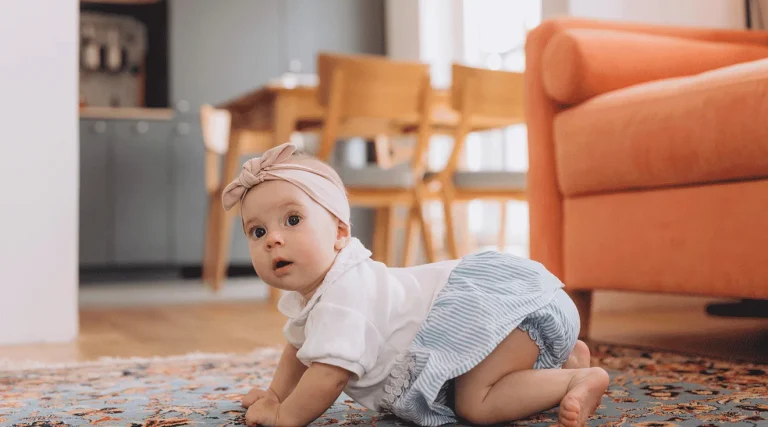
Baby-proofing your home is more than just a safety measure; This is an important part of keeping your children safe and providing a safe place to learn and grow. This complete guide will show you how to protect your home in a variety of ways, from identifying potential hazards to establishing rules and routines.
1. Start
A. Why babyproofing is important
Adding a new family member is exciting, but you also need to make sure your baby has a safe place to stay. Babyproofing means identifying and reducing hazards that may arise in your home before your baby or themselves can get hurt.
A risk that occurs in most families
For babies who love to explore, every home has its own risks. It is important that you are aware of these potential hazards, such as electrical sockets and sharp points, and that you take steps to deal with them.
2. Take a look at your house
A. Analysis of each room
1. Living room
Before you start babyproofing, inspect each room carefully. Pay attention to the places in the living room where your baby spends a lot of time.
2.Kitchen
There are many potential hazards in the kitchen, from hot surfaces to easily accessible cabinets. Find areas that need extra care.
3. Bedroom
Your child should feel safe and relaxed in the bedroom. Check the crib, furniture and any hazards.
B. Identify potential hazards
1. Plug
A simple but important step is to cover the plug. Buy plug covers to prevent curious children from snooping around.
2. Sharp edges
Corner protectors are a must to soften furniture with sharp edges, especially if the furniture is close to your baby’s eyes.
3. Steps
Place baby bars at the top and bottom of the stairs to prevent your child from falling. Make sure they are securely connected.
three. Important tool for baby protection
A. Child gate
In many situations, a baby gate is a useful tool to keep your child safe. You can use them to stop footsteps and prevent people from entering certain places.
B. Cabinet lock
Lock cabinets so your baby doesn’t have access to cleaning products, sharp objects, or anything else that could be dangerous.
C. Connection cover
Outlet covers are very important and don’t cost much. Use them to prevent children from reaching all the sockets in the house.
D. Furniture anchors
Climbing on heavy furniture can cause it to fall over. Use furniture nails to attach large or heavy objects to the wall.
Four. Babyproof DIY tips
A. Make the edges less sharp
Use foam or rubber corner protectors to protect the sides of furniture and other sharp objects.
B. Move heavy furniture into place
Bookcases, desks and other heavy furniture should be secured to the wall to prevent them from falling over.
C. Set aside a play area
Reserve specific areas for your children to play, where they can be easily observed and protected.
How to Choose Furniture and Decor Safely
A. Harmless things
Choose non-toxic furniture and decorations for the baby’s room to avoid exposure to chemicals that could be harmful to your baby.
B. Durable construction
Choose furniture that is well made and will withstand the wear and tear of a busy baby.
C. Toys suitable for all ages
To prevent your baby from choking, choose something appropriate for his or her age and growth stage.
six. a safe place to sleep
A. Crib Safety Rules
When setting up your crib, make sure you follow safety rules and that the mattress fits properly.
B. Stay away from loose sheets
To prevent your baby from suffocating, avoid blankets or pillows that are too loose in the crib.
C. Thoughts about temperature and ventilation
Keep the room temperature comfortable and provide adequate air circulation in your baby’s bed area.
seven. Be prepared for emergencies
Important things to know about a first aid kit
Keep a first aid kit with everything you need to deal with minor accidents.
B. Person to call in case of emergency
Have emergency contact information available, including the phone number of your child’s pediatrician.
C. Keep children away from visitors
Tell guests how to baby-proof your home and make sure they follow safety rules while they’re there.
8. Stay ahead of development milestones
A. Make changes as your child grows
As your baby gets older and moves more, you may need to change the babyproofing practices in your home.
B. Extreme education
Babyproofing is a great time to teach your child about boundaries and safe places
As your baby grows and discovers new areas, you should regularly check and update your baby protection equipment.
11. Questions people often ask
A. When should I start creating a safe home for my baby?
You can start babyproofing as soon as your baby is walking, usually around six months.
B. Do I need all of these baby proofing items?
Electrical socket covers, wardrobe locks and baby gates are all important items for baby proofing. Find out what your home needs.
C. How often should I check my baby protection equipment?
Review your babyproofing steps every few months and make changes as your baby grows and learns.
What if I don’t have much money?
Yes, there are ways to keep babies safe without spending a lot of money. Pay attention to important items such as electrical outlet covers and baby gates.
E. Does it make sense to hire professional baby proofing?
For added peace of mind, consider hiring a baby proofing service to perform a full inspection and installation.
Ultimately, babyproofing is an ongoing process that will change as your child grows. You can provide a safe place for your baby to explore and grow by eliminating potential hazards, choosing safe furniture, and establishing routines.